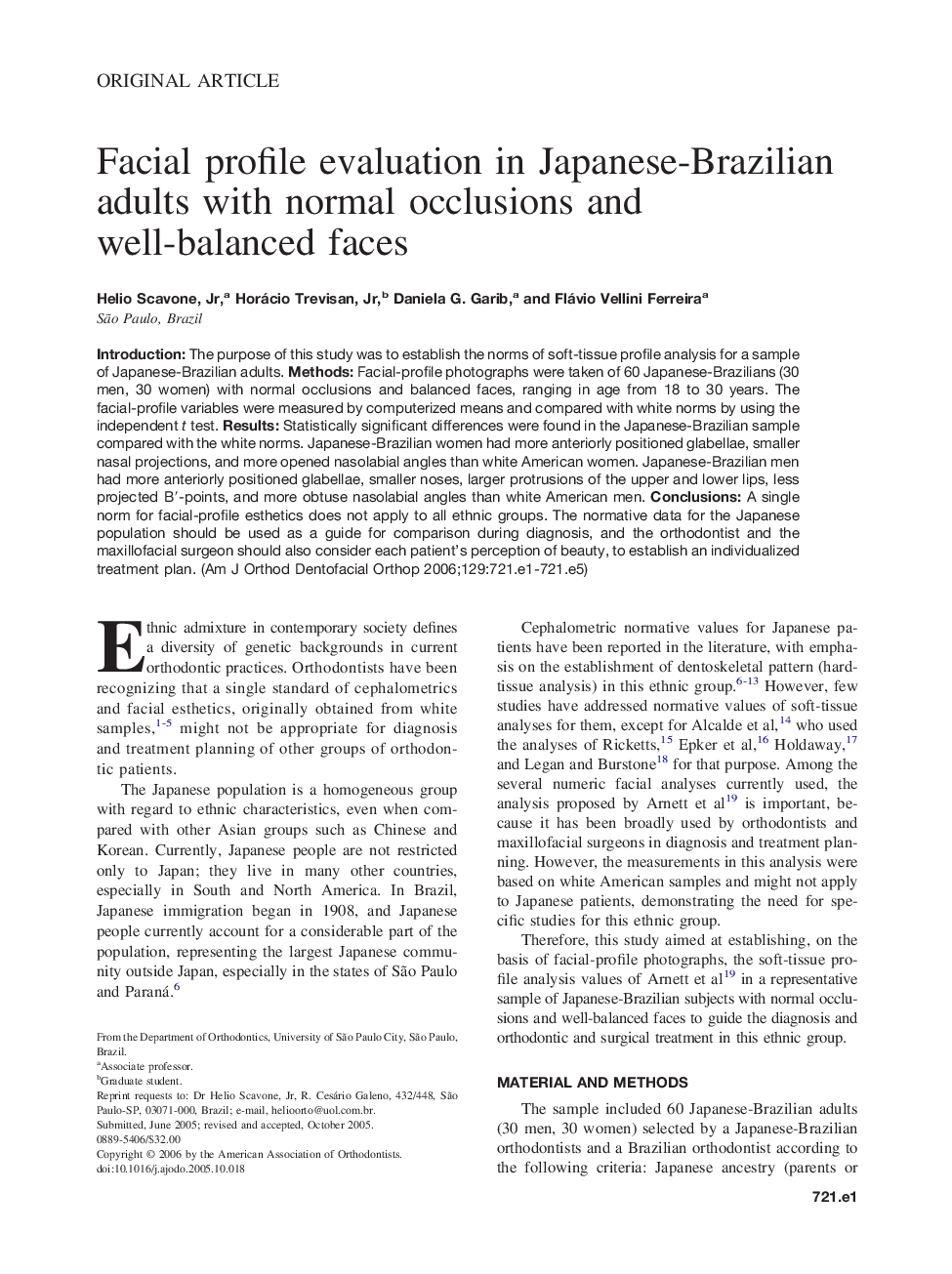| Article ID | Journal | Published Year | Pages | File Type |
|---|---|---|---|---|
| 3120147 | American Journal of Orthodontics and Dentofacial Orthopedics | 2006 | 5 Pages |
Abstract
Introduction: The purpose of this study was to establish the norms of soft-tissue profile analysis for a sample of Japanese-Brazilian adults. Methods: Facial-profile photographs were taken of 60 Japanese-Brazilians (30 men, 30 women) with normal occlusions and balanced faces, ranging in age from 18 to 30 years. The facial-profile variables were measured by computerized means and compared with white norms by using the independent t test. Results: Statistically significant differences were found in the Japanese-Brazilian sample compared with the white norms. Japanese-Brazilian women had more anteriorly positioned glabellae, smaller nasal projections, and more opened nasolabial angles than white American women. Japanese-Brazilian men had more anteriorly positioned glabellae, smaller noses, larger protrusions of the upper and lower lips, less projected Bâ²-points, and more obtuse nasolabial angles than white American men. Conclusions: A single norm for facial-profile esthetics does not apply to all ethnic groups. The normative data for the Japanese population should be used as a guide for comparison during diagnosis, and the orthodontist and the maxillofacial surgeon should also consider each patient's perception of beauty, to establish an individualized treatment plan.
Related Topics
Health Sciences
Medicine and Dentistry
Dentistry, Oral Surgery and Medicine
Authors
Helio Jr, Horácio Jr, Daniela G. Garib, Flávio Vellini Ferreira,
